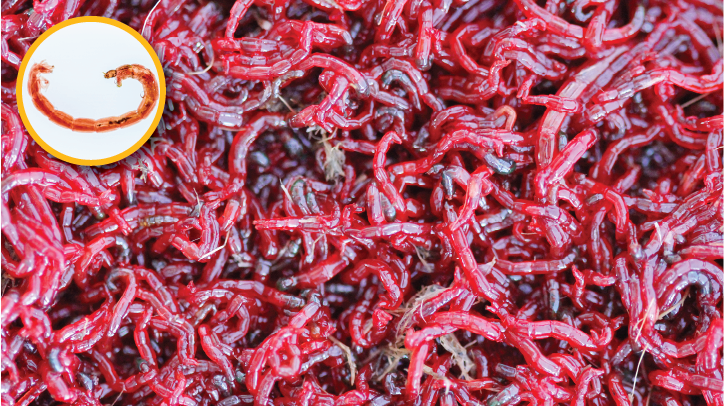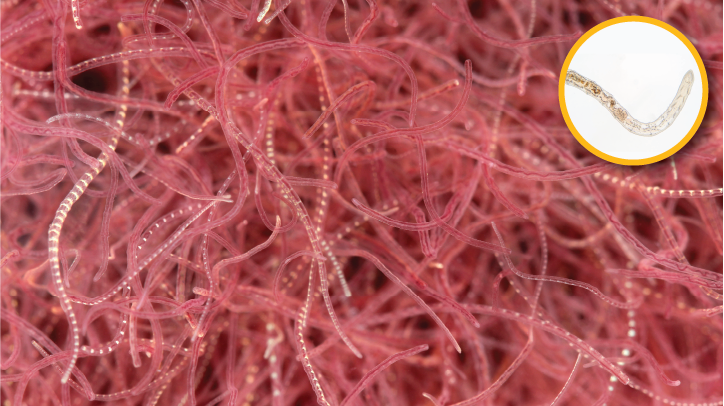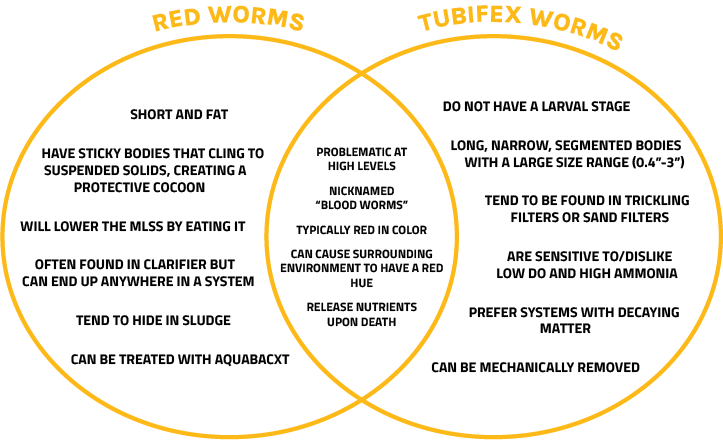The Secret Life of Bugs:
Red Worms vs Tubifex Worms
Worms make my skin crawl, but can you tell the difference between them?
by Natalie Walton, Aquafix Microscopist
by Natalie Walton, Aquafix Microscopist


Worms, I hate worms but probably not for the same reasons as wastewater operators. Worms can cause real problems for a wastewater plant while the worst they do to me is make my skin crawl. I can handle my worm problem by simply running in the opposite direction. Unfortunately, operators do not have that same luxury.
To successfully handle worm problems, operators need to first know what kind of worm(s) they are dealing with. There are many types of worms that can be present in a wastewater plant that all require different types of treatment. However, there are two in particular, red worms and Tubifex worms, that we often encounter and can be difficult to distinguish with just the naked eye. This is usually when I’ll get unsolicited worm photos emailed to me.
Despite what their name suggests, red worms are the larvae of midge flies, not true worms. This is one of the key differences between them and Tubifex worms. While knowing this may not help in telling the two apart, it does allow us to understand why they require different treatments. For example, red worms typically require a two-pronged treatment approach because they form protective cocoons. A successful red worm treatment will first use Lar-V-Xyme to break down the cocoons, leaving the red worms exposed to then be treated with an EPA-registered biological larvicide, such as AquaBACxt. While on the other hand, successful treatment for Tubifex worms relies on the ability to minimize or eliminate the habitat where they thrive, typically settled sludge. In the diagram below you can find even more ways these “worms” compare to each other.

If you are still unsure or want confirmation that your identification is correct, the Aquafix lab can help. Just know, your response may come from someone other than me. It is not that I don’t care about your worm troubles, I do. Rather, my track record is not the greatest for maintaining my composure during worm identifications, especially if I am looking at them under the microscope. In my defense, on rare occasions I see something that can’t completely fit in the 4x objective field of view it doesn’t move. So, who could fault me that I got startled and shrieked a little when that worm started to move after being still for so long? I mean, that’s the reason my coworker started laughing after I explained why I suddenly yelped, right?
Anyway, I hope this quick guide is helpful and feel free to still send worms this way. I know that, unfortunately, no matter how hard I try I cannot avoid worms forever. Thanks for reading and stay tuned for the next edition of Secret Life of Bugs!

About the Author
Natalie Walton joined Aquafix in 2019 and focuses on performing microscopic analysis for customer samples, as well as conducting experiments on innovation in grease removal. She was also a key contributor to creating our Microorganisms Database supplying identification tips and research.
